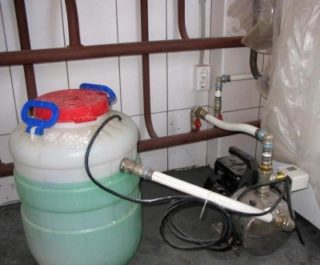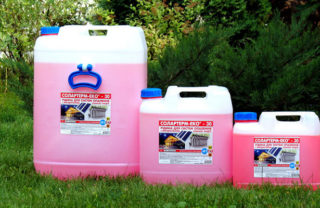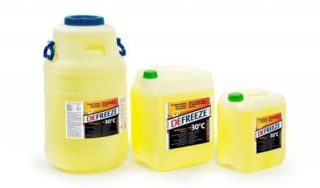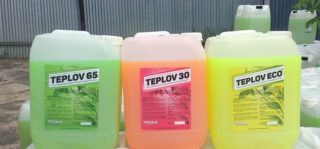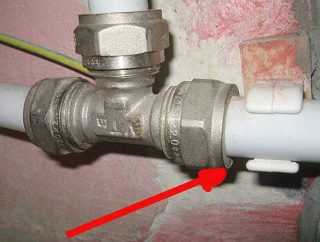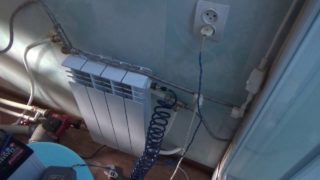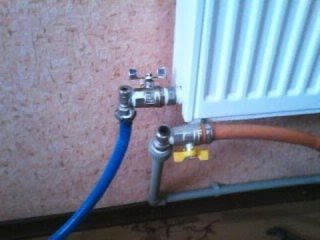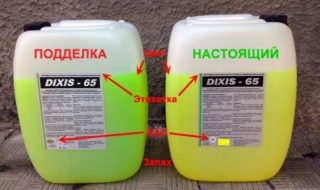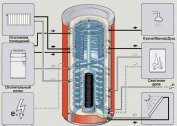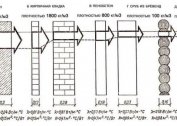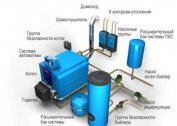Antifreeze is called an antifreeze, emphasizing the main property - preservation of fluidity at low subzero temperatures. Motorists use anti-freeze in the cooling system. Another area of its application is the heating system of country houses. Antifreeze for the heating system allows you to prevent freezing, which occurs during a long power outage or a long departure from a country house in winter.
Types and features of antifreeze
Antifreezes are classified by type of base:
- propylene glycol;
- ethylene glycol;
- solutions based on alcohol and glycerol.
Varieties differ among themselves in physical and technical characteristics. Choosing one of them, you should take into account the features of the heating system and the conditions in which it operates. To fill the systems produce special compounds. Car antifreezes, such as antifreeze, are not suitable for heating. They contain a lot of toxic substances and adversely affect the rubber and metal elements of the line, serve 1, maximum 2 years.
Propylene glycol
The main positive property of the propylene glycol composition is harmlessness. It is non-toxic, can be used in open heating systems and double-circuit boilers, where water is heated for water supply. Even if propylene glycol leaks into the water, significant health damage will not be inflicted.
The technical properties of propylene glycol antifreeze are also good. They do not have an aggressive effect on the inner surface of the system elements.
Disadvantages are also available:
- high viscosity, which is two times higher than the viscosity of ethylene glycol;
- interaction with zinc: a reaction occurs with the formation of white insoluble flakes, the metal is destroyed;
- high price.
It is easy to distinguish propylene glycol coolant from ethylene glycol: the first is colored green and often has the ECO mark. Instead of propylene glycol antifreeze, glycerin counterfeit can be purchased.
Ethylene glycol
Ethylene glycol compounds are highly toxic. This is their main drawback. The danger of ethylene glycol is indicated by a red or yellow color of the liquid. Thanks to its bright color, it is easier to detect a coolant leak. It can be harmful if it gets into the lungs or skin. The lethal concentration when ingested is 2 mg per 1 kg of weight. In this regard, the disposal of antifreeze of this type is a certain problem. For safety reasons, ethylene glycol coolant is used only in single-circuit systems where there is no risk of getting into the water supply circuit. The technical properties of ethylene glycol allow the use of liquids based on it at temperatures up to –65 ° C.
In some countries, ethylene glycol coolant is prohibited.
Solutions based on alcohol and glycerol
There is an ambiguous opinion about glycerin coolants. Some say that glycerin is the best household antifreeze for the heating system, others indicate many of its shortcomings:
- high viscosity of the substance, due to which equipment wear is accelerated - to compensate for the high viscosity of glycerin, the composition is diluted with alcohol;
- higher density in comparison with other antifreezes;
- conversion to poison at temperatures above 90 ° C;
- risk of foaming;
- relatively low heat capacity;
- chemical interaction with rubber and plastic;
- after evaporation, the water becomes solid or jelly-like.
However, glycerin coolants have many positive properties:
- fire and explosion safety;
- environmental friendliness;
- chemical inertness to zinc;
- wide range of operating temperatures: from –30 ° C to 105 ° C;
- low cost;
- long service life - 10 years;
- Do not expand when frozen.
Glycerin formulations are produced according to TU, and this is another drawback, because manufacturers set the standards themselves.
The production of glycerol antifreeze in individual countries is not carried out.
You can also use solutions with a content of 40-55% ethyl alcohol as a coolant. They are environmentally friendly, crystallize at –30 ° C. However, their use is limited to hermetically sealed closed systems, because they are characterized by increased volatility. Boiling point - 90 ° C, which is the minimum indicator among all types of coolants.
Advantages and disadvantages
Distilled water is also poured as a coolant, but if in winter a prolonged absence of owners in the house is possible or the electricity is periodically turned off, the coolant in the radiators may freeze. In such cases, it is recommended to fill the system with antifreeze for heating.
Benefits:
- pipes due to expansion of frozen water will not burst;
- no need to drain the water from the system during the absence;
- antifreeze has a low freezing point - up to –65 ° C, and even at a lower temperature it does not turn into ice, but becomes jelly-like, expanding to a much lesser extent than water;
- with increasing temperature, the frozen coolant retains its properties;
- the composition contains additives that prevent the formation of scale and reactions with metals.
Disadvantages:
- low-quality antifreezes destroy the elements of the heating system, since a solid precipitate falls out in them, which destroys fittings and devices;
- reduced level of heat capacity in comparison with water (15% less), in order to compensate for this drawback, it is necessary to increase the circulation rate of the coolant by exactly the same amount;
- increased viscosity (30-50% higher compared to water) and higher density (5-10%), which is why it is necessary to install more powerful pumping equipment;
- toxicity;
- sedimentation over time;
- high price;
- the need for thorough sealing of compounds, due to increased fluidity (50% higher than that of water).
Despite the disadvantages, antifreeze is used in heating systems, since it practically does not freeze and does not expand, leading to damage to pipes and equipment.
Features of the use of antifreeze in the heating system
Since glycol formulations are unsafe, safety precautions should be observed when using them. In addition, there are certain features of the use of antifreeze in the heating system:
- The glycol coolant should not be poured into an open system where the liquid in the expansion tank is in contact with the atmosphere, because toxic substances can enter the air. This is allowed only when using propylene glycol coolant, if there is confidence in its quality.
- When purchasing a coolant from another manufacturer, in order to add it to the system, you need to check for compatibility with old antifreeze, because additives can neutralize each other, which leads to the disappearance of anticorrosion properties.If it is not known which coolant was used before, it is necessary to completely drain the liquid.
- To work in a system with antifreeze, a pump is required 60% more powerful than for water.
- Radiators must be selected with a greater degree of heat transfer, for example aluminum or bimetal. In addition, it is advisable to choose a model with a large inner diameter and volume.
- The system does not work with automatic air vents; therefore, Majewski cranes are installed.
- The system must be equipped with an accurate temperature controller, since exceeding certain limits leads to the decay of the coolant. The reaction is accompanied by precipitation, which subsequently causes the formation of soot, corrosion, acid, foam and airing of the system.
Only with proper operation and compliance with all recommendations for the selection of equipment, the use of antifreeze in the heating system will be beneficial.
DIY filling the coolant into the heating system
Antifreeze for heating ages over time, its heat capacity and anticorrosion properties decrease, therefore it is periodically changed. The average frequency is 5 years. Before filling the coolant, it is necessary to drain the old antifreeze from the system.
Work execution order:
- Be sure to warm up the heating boiler, regardless of the ambient temperature.
- They open the batteries and put the system into gravity.
- The boiler and other devices of the system are disconnected from the mains.
- Buckets are prepared, basins for draining the old coolant.
- With the help of a shut-off valve, the pump is disconnected, since without a coolant it instantly fails. Inside, the old antifreeze will remain, but its volume will be small, so this will not affect the operation of the system.
- Open the valve and fill the tank. It is preferable to drain the system through a filling valve located near the boiler, at the lowest point. If a drain hole is not provided, connect one end of the hose to the drain hole of the battery or to a Mayevsky tap, the other end is inserted into the container.
- After draining the coolant, the system is washed with clean water or solutions specially designed for this purpose.
- In accordance with the manufacturer's instructions, the liquid is diluted according to the required freezing temperature. The freezing temperature has a nonlinear dependence on the amount of water poured - when diluting 20 l of antifreeze with a freezing temperature of –65 ° C by 50% water, the freezing temperature will be –20 ° C, rather than –32.5 ° C, as one might suggest.
- Clean the dirt filter.
- Using a pump connected to the injection hole, fill the system with fresh composition.
- In the process, it is necessary to bleed air, controlling the pressure according to the pressure gauge.
To dilute the coolant, use only distilled water that does not contain calcium and magnesium salts, otherwise a precipitate will form. In extreme cases, the reaction should be checked by separately mixing tap water with a small amount of antifreeze in the required proportions. It is mandatory to connect the composition with water in a separate container to ensure uniform mixing. It is impossible to fill in antifreeze first, and then water, into the system. This leads to uneven heating of the radiators, failure of the pumping equipment, foaming. If, unknowingly, the system was filled in this way, the pump is turned on at minimum power and gradually bleeds the air. Mixing will happen over time, but there is no guarantee that it will be even.
If ethylene glycol coolant is poured into the system, the containers used in the process should be disposed of and the pump must be washed with hot water and detergents.
Heat carrier manufacturers
Antifreezes consist of 30-65% glycol, 30-50% distilled water, 3-4% additives that prevent foaming, metal corrosion, and precipitation. The market offers a wide range of antifreezes designed for heating a country house. They are mainly made from imported raw materials and are sold at approximately the same price. If the product is too cheap, you should doubt its quality. You can check the composition with soda. Since counterfeit antifreezes mostly have an acidic environment, you can mix a pinch of soda with a small amount of coolant. If at the same time hissing is observed and foam is formed - the product is of poor quality, if the reaction does not occur - antifreeze is good.
The best antifreezes are the following:
- Dixis-65. The heat carrier with the best crystallization rates. This antifreeze is suitable for gas and electric heating boilers, systems with elements of cast iron, copper, plastic, aluminum, brass. Ambient temperature from –65 ° C to + 95 ° C. It can be used for heating houses in the Far North. When used in milder climates, it is possible to dilute the coolant with water 1: 1. Advantages: service life - at least 5 years, fire safety.
- Warm Eco House. Propylene glycol coolant with a crystallization temperature of –31 ° C. Service life - 5 years or more. The boiling point is 106 ° C, and destruction occurs only at + 170 ° C. It combines with sealants and does not expand.
- Thermagent-65. Domestic antifreeze produced from German raw materials. It can be used in systems with rubber gaskets, sealant. Preserves properties up to 10 years and has a low freezing temperature. It can be used at ambient temperatures up to –65 ° C.
Antifreeze is a coolant that has a lower coefficient of expansion compared to water. This property is of prime importance. According to other physical and technical parameters, water exceeds antifreeze. The use of anti-freezing should be competent. Then the service life of the system will increase.
